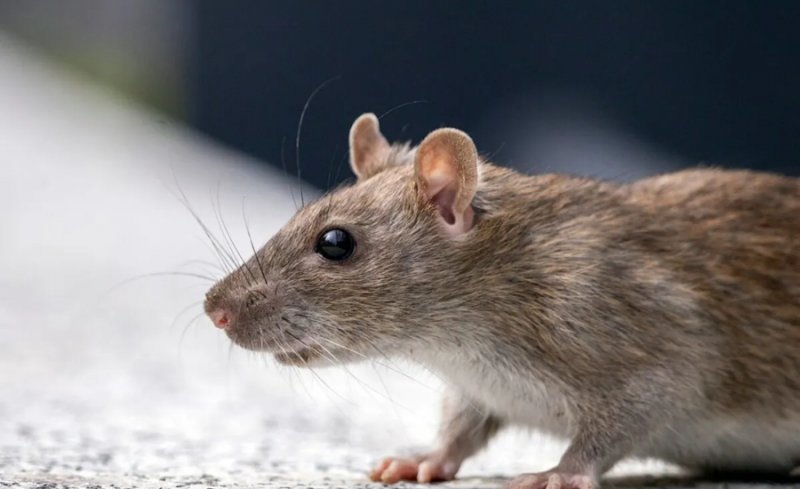Say Goodbye to Rats with Salt: A Natural Approach
Homeowners and businesses might be bothered by rat infestations. To protect humans and the environment, effective and safe rodent control is needed. There is growing interest in eco-friendly rat poisons and traps.
Salt is a popular rat control strategy. Yes, common kitchen salt! It’s scientifically sound. Salt kills rats, making it a promising natural and non-toxic option.
We examine the science behind “Killing Rats with Salt,” compare it to traditional methods, and provide step-by-step directions for implementing this eco-friendly method. From studying rat behavior to homemade methods and commercial items, we strive to provide a full overview of using salt for rat eradication.
If you’re seeking for a safer alternative to chemical poisons or want to try new rat control methods, this article will help you decide. Let’s find out how salt can help battle rat infestations.
Rat infestation warning signs in a home
1 Sight of Rat Droppings
Rat droppings can indicate a rat infestation. Black pellet-shaped droppings are typical. Rats are not only unhygienic but can also spread diseases by leaving their urine and feces in our living spaces. Due to their limited vision, rats tend to create established pathways within the walls, which can further exacerbate the problem.
2 Damaged Items
If you notice various items around your house showing signs of wear and tear or outright destruction, it may be a clear indication of a rat infestation. These stealthy parasites love to chew on anything. From papers to furniture, electrical wires to storage containers, and even leftover food, nothing seems to be off-limits for them.
3 Strange Smell or Sounds
Rats can emit a strong smell of ammonia, which can be quite distinct and unpleasant. Additionally, they may generate noises as they scurry about your home, including scratching, squeaking, and rustling sounds. If you detect any peculiar odors or hear unfamiliar noises, it could be a sign of a rat problem on your property.
4 Small Rat Footprints
Another sign to look out for is the presence of rat footprints and tail marks in areas where rats roam. These little creatures often leave grease marks and smudges as they move around. If you come across these telltale signs, it’s crucial to act promptly and contact a pest control company right away to address the rat infestation effectively.
What issues might rats cause for your home?
1 One significant concern when dealing with a rat infestation is the potential for structural damage to various building materials. Rats gnaw, damaging wood, drywall, insulation, and other housing components.
2 Another alarming risk posed by rats is their habit of gnawing through power wires. This behavior raises the serious possibility of electrical fires and even the risk of electrocution. Shockingly, it’s estimated that rat and mouse damage accounts for a substantial 20-25% of all home and property fire incidents annually, especially in the United States.
3 Not only do rats wreak havoc on the building’s infrastructure, but they can also infiltrate your living space and destroy furniture. They are capable of digging into cushion batting and causing significant damage to your cherished pieces.
4 Besides the physical destruction they cause, rats can create quite a disturbance with their constant noises. Scratching, scrambling, and squeaking might make it hard to relax or sleep at home.
5 Rats can sneak into many places. They may nest in wall cavities, beneath sinks, and even within household appliances, such as the bottom of a washer or the rear of a refrigerator. This not only poses a threat to your appliances but also makes it challenging to eradicate them from your living spaces.
What Is the Solution?
Rats can be incredibly destructive creatures, causing damage to shielding, electrical lines, and even walls. You need a long-term rat solution to regain your house and ensure your safety.
Rat poison is a dangerous solution, especially for pets. Accidental exposure to rat poison can make your beloved furry friends very ill or, in worst-case scenarios, even lead to fatal consequences. Responsible pet owners cannot risk this.
In search of safer alternatives, some people have turned to salt as a potential remedy for dealing with rats. It’s odd, yet true. It takes more than a salty snack to hurt rats. The process of using salt to deter rats requires a deeper understanding, so let’s delve into it further to explore its effectiveness and safety.
How Do Rats React to Salt?
Based on the information currently available, rats can take approximately a day or even less to die after consuming a lethal amount of salt. For the salt to be fatal, they need to ingest at least 80 grams (0.17 lbs) of it. Rats have a threshold, and they cannot survive with more than 70 to 75 grams (0.16 kg) of salt in their bodies. Any excess might cause severe neurological disorders such as muscle paralysis, deafness, blindness, weakness, gastritis, and inflammation.
What’s alarming is that due to their small bodies, rats metabolize any excess salt quite quickly, causing the negative effects to show up much faster than in larger animals like humans. However, rats have an interesting ability to potentially counteract the impact of excessive salt consumption by drinking water. Salt can control rats if used properly, however, water can reverse the detrimental effects of salt consumption.
Interestingly, rats don’t naturally seek out salted foods, and sodium chloride isn’t their preferred choice of food. They typically consume salt as part of the items they encounter by default. Since they already get enough salt from their existing food sources, they don’t actively seek out additional salt.
Is Rat Killing Prohibited in the US?
Dealing with rat infestations can be a challenging and concerning task. While killing rats may seem harsh, it becomes a necessary step to protect our homes from the extensive damage and potential health risks these rodents can bring. Rats are not only notorious for causing structural harm but also for carrying various illnesses that can endanger our well-being.
In the United States, different states have varying approaches to rat control. In some states, the extermination of rats is encouraged as a means to safeguard homes and communities. However, other states require trapping and releasing rats.
Washington D.C. requires exterminators to trap and release rats. The District of Columbia bans rat glue traps and snap traps, thus they recommend animal rehabilitators relocate rat families.
Cats and dogs can hunt rats in all 50 states, but doing so for sport is forbidden in many. Rat poison can injure pets and children, hence some states have strict packaging rules.
In conclusion, managing rat populations requires a thoughtful and cautious approach. Balancing effective pest control with humane methods is essential to ensure the safety of both our homes and the environment. Understanding and abiding by state-specific laws and guidelines can help us deal with rat infestations responsibly and effectively.
Are rats poisoned by salt?
In average concentrations, salt does not act as a poison for rats. If it were lethal to them, we would see immediate deaths whenever rats consume salty items found in our homes, such as cured meats and cold cuts.
Salted peanuts, potato chips, and other salty foods are harmless to rats. Rats prefer low-salt diets. Unlike humans, rats don’t actively seek out salt as part of their regular diet. When their bodies ingest excessive amounts of salt, it leads to rapid dehydration as the body loses water. Additionally, the organs responsible for eliminating toxins come under stress, potentially leading to dysfunction over time.
Although rats may not be poisoned by salt in itself, they can be used as part of a bait mixture to eliminate them. Combining salt with other foods as bait may prove effective in killing rats. However, it’s essential to note that solely relying on salt bait might not be sufficient, especially if you’re dealing with a significant infestation. In such cases, using a variety of tested rodent control techniques in conjunction with salt bait becomes necessary to effectively manage the rat population.
While salt is not inherently lethal to rats, it can be incorporated into bait to assist in controlling their numbers. Combining salt with other methods of rodent control will yield better results, ensuring a comprehensive approach to dealing with rat infestations.
Exactly how does salt kill rats?
Rats can be quite a nuisance with their cunning behavior. Their activities can become unbearable as they chew on everything, sneak into food items, and shred valuable belongings. While many people may resort to using salt as a means to eliminate rats, it’s essential to understand how it actually works in this context.
Salt has several effects on rats:
Dehydrating Mineral: Salt is known for its dehydrating properties. Rats can suffer organ failure from excessive salt consumption.
Rats’ Dislike for Salt: Interestingly, rats generally don’t have a preference for salty food. However, you can strategically use this dislike to your advantage by sprinkling salt on their favorite food items, leading to their demise.
Lethal Amount: It takes approximately 80-100 grams of salt to kill a rat. This relatively small amount can have significant consequences for them.
Harmful Effects: An excess of salt consumption can result in various health issues for rats, such as muscle weakness, neurological defects, and even blindness.
Slow Death: In addition to the direct effects, an excessive amount of salt can slowly kill rats by causing gastric and systemic inflammation, further compromising their well-being.
While using salt as a method to control rat populations may seem like a straightforward solution, it’s crucial to recognize the potential risks and ensure responsible usage. Employing safe and tested rodent control techniques, in conjunction with salt if necessary, can help effectively manage rat infestations without causing unnecessary harm to other living beings or the environment.
Preparing for Rat Eradication
Before embarking on the journey of rat eradication using salt, it’s essential to prepare yourself and your surroundings for a successful and safe process. Rats can be elusive and resourceful creatures, so proper planning and precautions are crucial. Here are some key steps to take before initiating rat control with salt:
- Identifying Rat Infestations:
Understanding Rat Behavior: Learn about the typical behavior and habits of rats to identify signs of infestation, such as droppings, chewed wires, and gnaw marks.
Surveying Problem Areas: Inspect your home or property to pinpoint areas with rat activity, including nesting spots and entry points.
- Safety Measures and Precautions:
Protective Gear: Gather appropriate safety gear, such as gloves and a mask, to shield yourself from potential health risks associated with rats and salt exposure.
Child and Pet Safety: Plan how to keep children and pets away from the treated areas to avoid accidental salt ingestion.
- Choosing the Right Type of Salt for Rat Control:
Salt Varieties: Research and select the appropriate type of salt for your rat control needs. Different forms of salt may have varying effects and potencies against rats.
Quantity Calculation: Based on the infestation severity and treatment area, determine the salt dosage.
By taking these preparatory steps, you set the foundation for a successful rat eradication endeavor using salt. Proper identification of infestation areas and understanding of rat behavior allows you to target key spots effectively. Equipping yourself with the necessary safety measures ensures a secure and hazard-free process while choosing the right salt ensures maximum potency against unwanted rodent invaders. With these preparations in place, you are now ready to move on to implementing salt-based rat control methods.
Homemade Salt-Based Rat Killing Solutions
Using salt as a rat-killing solution can be a cost-effective and natural alternative to chemical methods. When implemented correctly, homemade salt-based solutions can help control rat populations effectively. Here are three effective homemade rat-killing solutions using salt:
Salt Lethal Traps:
One of the most straightforward homemade solutions is creating lethal traps using salt. Start by putting a little salt on a sticky surface or container. Rats attracted to the salt’s scent, will come in contact with it while trying to reach the bait. The salt will cause dehydration and internal damage, leading to the rat’s demise.
Salt Poison Baits:
Mixing salt with enticing bait can create a deadly concoction for rats. Combine salt with a food source that rats find irresistible, such as peanut butter or bread crumbs. Place the baited mixture in strategic locations where rat activity is high. When the rats consume the salt-laced bait, it disrupts their internal balance and eventually proves fatal.
Salt Repellents and Sprays:
While the goal is to kill rats, using salt as a repellent can deter them from entering certain areas. Create a saltwater solution and spray it around entrances, gaps, or cracks where rats might try to enter your property. The strong smell of salt can act as a deterrent, keeping rats at bay without causing them direct harm.
When using homemade salt-based rat-killing solutions, it’s essential to place the traps and baits strategically, focusing on areas with high rat activity. Remember that these methods might take some time to show results, so patience is key. Always prioritize safety, ensuring that the solutions are out of reach of children and pets. By utilizing these homemade salt-based solutions, you can take a proactive approach to controlling rat infestations naturally and responsibly.
Implementing the Salt Rat-Killing Methods
After making DIY salt-based rat-killing treatments, implement your approach. These approaches need precise execution and strategic salt trap and bait placement. Step-by-step instructions for salt rat-killing:
Find rat-prone areas like dark nooks, wall gaps, and food sources. These places are ideal for salt deadly traps and baits. To avoid harming children and pets, keep traps and baits hidden.
Salt-deadly traps use a small amount of salt on sticky surfaces or within containers near the rat’s route. Salt attracts rats, trapping them. Salt dehydrates them, killing them.
Salt poison baits are mixed with a tasty food source and placed in rat activity areas. Rats will eat the bait without realizing it’s poisonous. Salt disrupts their internal balance, killing them.
Consider repelling rats using a saltwater solution. Spray the solution around potential rat entryways. Salt’s pungent smell deters rats without harming them.
Be patient and keep checking and restocking traps and baits. Monitor rat behavior and move salt-based solutions as appropriate.
Use salt rat-killing methods safely. Avoid salt exposure by handling traps and baits with gloves and a mask. Follow these techniques to use salt to manage rat infestations naturally and responsibly.
Environmental Impact and Considerations
Using salt as a rat-killing method offers several advantages, including its natural properties and eco-friendly attributes. It’s essential to examine this approach’s environmental impact. Salt is harmless in moderation, but excessive use can harm the ecosystem.
One primary concern is the potential impact on other wildlife and pets. If salt-based rat-killing solutions are not properly contained or controlled, other animals might inadvertently consume the salt, leading to dehydration or health issues. Therefore, it’s crucial to place the traps and baits strategically, ensuring they are not accessible to non-target species.
Another aspect to consider is the proper disposal of rat carcasses. When rats are killed using salt-based methods, their bodies may still contain high salt concentrations. Disposing of these carcasses irresponsibly can lead to salt leaching into the soil or water sources, affecting nearby vegetation and aquatic life. It’s essential to follow local regulations for the safe and appropriate disposal of rat carcasses.
Additionally, the effectiveness of salt rat-killing solutions can be influenced by environmental factors. In areas with heavy rainfall or high humidity, the salt may dissolve quickly, reducing its potency and limiting its efficacy as a rat control method. Considering these factors can help determine the best time and conditions to apply salt-based solutions.
To minimize the environmental impact, it’s crucial to use salt rat-killing methods responsibly and sparingly. Implementing other preventive measures, such as rat-proofing your property and maintaining a clean environment, can help reduce the need for excessive salt usage. By striking a balance between effective rat control and environmental preservation, you can utilize salt as a responsible and sustainable solution for managing rat infestations.
Common Mistakes in Rat Eradication with Salt
Using salt as a rat eradication method can be an effective and eco-friendly approach if executed correctly. However, certain common mistakes can hinder the success of this strategy. Avoiding these pitfalls is essential to ensure the desired outcome in rat control. Here are two key mistakes to watch out for:
- Inadequate Salt Dosage:
One of the most prevalent mistakes is using insufficient amounts of salt in traps or baits. Rats require a significant quantity of salt for it to be lethal, and using small quantities may not have the desired effect. Always ensure that there is an adequate concentration of salt in the lethal traps or poison baits to effectively kill the rats. Additionally, check and replenish the traps or baits regularly to maintain their potency. - Ignoring Rat Hiding Spots:
Rats are adept at finding hidden areas to build their nests and seek shelter. Failing to target these hiding spots can result in ineffective rat eradication. It’s essential to identify and focus on areas where rat activity is high, such as dark corners, storage spaces, and gaps in walls. Placing salt lethal traps and poison baits strategically in these locations increases the chances of rats coming into contact with the salt and getting eliminated.
By avoiding these common mistakes and applying salt rat eradication methods with precision and vigilance, you can improve the effectiveness of this natural and eco-friendly approach. Regularly assess the rat activity, adjust the salt dosage as needed, and target the rats’ hiding spots to ensure successful rat control with salt.
Rats Can Be Killed With Other Foods
Using cheese as bait to kill rats is a common and straightforward method, but there are other food options you can consider as well. Foods with strong scents like bacon, fish, and others can be alternated with cheese to attract rats effectively. However, regardless of the bait you choose, it’s crucial to incorporate at least 80 grams of salt into it to ensure its lethal effect on rats.
If you prefer a more discreet method, you can use rat chow as bait, which helps mask the presence of salt. This method may work best for bigger rat populations, as it may not be practicable for a few rats. You can find rat chow at pet food stores or conveniently purchase it from online marketplaces.
Another effective and readily available bait option is peanut butter. Its creamy texture not only makes it appealing to rats but also helps in dissolving the salt easily. Most households have peanut butter on hand, making it a convenient and effective choice for luring rats and dealing with infestations.
Any pest control strategy must be done carefully to protect other animals and the environment. Combining these bait options with other proven rodent control techniques can help you effectively manage rat populations and keep your home free from these unwanted visitors.
Comparing Salt Rat Control to Traditional Methods
When it comes to rat control, traditional methods such as chemical poisons, traps, and glue boards have been commonly used for many years. However, with growing concerns about the environmental impact and potential health risks associated with these methods, alternative approaches like using salt have gained popularity. Let’s compare salt rat control to traditional methods:
Safety and Environmental Impact:
Traditional rat control methods often involve the use of chemical poisons, which can pose risks to both humans and non-target animals. Pets and wildlife may accidentally ingest the poison, leading to harmful consequences. In contrast, salt is a natural substance and is considered safe for humans and animals in moderate quantities. It offers a more environmentally-friendly approach, reducing the risk of harming other wildlife and pets.
Effectiveness and Efficiency:
Chemical rat poisons are designed to be potent and quick-acting, which can lead to rapid rat extermination. However, they may also result in rats dying in hard-to-reach areas, leading to unpleasant odors and sanitation issues. Salt-based rat control methods might take longer to show results, as rats need to consume a sufficient amount of salt to be affected. However, the delayed effect can be advantageous as it allows rats to return to their nests, leading to the potential elimination of entire rat colonies.
Cost and Accessibility:
Traditional rat control methods like chemical poisons and specialized traps often come with associated costs. Additionally, some may require professional assistance for proper implementation. However, salt is cheap and frequently available from home supplies. This makes salt rat control a more affordable option, especially for individuals on a budget.
Human Health Concerns:
Chemical rat poisons can pose health risks to humans if mishandled or ingested accidentally. Salt, when used responsibly, does not pose similar health hazards, making it a safer option for households with children and pets.
Rat Prevention Strategies
Preventing rat infestations is essential for household and workplace cleanliness. Rats can be prevented using numerous methods. Cleanliness comes first. Food attracts rats, so clean up spills, keep food in sealed containers, and dispose of rubbish in tightly closed bins. Cleaning and sanitation eliminate rat food and hiding places.
Rat prevention includes sealing entry points. Rats can fit through small openings, so check walls, floors, and foundations for gaps, fractures, and holes. To keep rats out, caulk or steel wool these entryways. Check doors, windows, and vents for rats.
Outdoor upkeep is crucial. Rats hide and nest among overgrown bushes and greenery. Firewood and other materials can attract rats seeking refuge, so store them away from your home or structure.
Garden rat-proofing. Raise compost bins, seal trash cans, and choose ripe produce. Removing garden food sources deters rodents.
Natural deterrents can also prevent rat infestations. Rats avoid peppermint oil. Peppermint-soaked cotton balls can repel intruders.
Regular property inspections can detect rat activities. Rats leave droppings, gnaw marks, and other signs. Respond swiftly to rat behavior to avoid an infestation.
Following these rat prevention tactics and taking proactive measures will reduce the danger of infestations and ensure a rat-free home or workplace.
People Also Ask (FAQs)
Here Are Some (FAQs):
Q1: How can I prevent rats from entering my home or property?
A: Preventing rats from entering your home or property involves a combination of measures. First, ensure a clean environment by promptly cleaning up food spills, storing food in sealed containers, and properly disposing of garbage. Seal off any gaps, cracks, or holes in walls, floors, and foundations to prevent rats from finding entry points. Trim overgrown vegetation and secure outdoor items like firewood away from the perimeter of your home.
Q2: Are there any natural ways to deter rats from my property?
A: Yes, there are several natural deterrents that can help repel rats. Peppermint oil, for example, has a strong scent that rats dislike. Placing cotton balls soaked in peppermint oil near potential entry points can act as a natural deterrent. Additionally, cats and certain plant varieties like daffodils and marigolds are known to discourage rats from coming near your property.
Q3: What should I do if I spot signs of rat activity in my home?
A: If you see droppings, gnaw marks, or rats, act immediately. Start by setting up rat traps or using salt-based rat-killing methods to control the existing rat population. Concurrently, inspect and seal any entry points that rats may have used to gain access. Remember to wear gloves and exercise caution when handling traps and disposing of rat carcasses.
Q4: Can I use rat poison to control rat infestations?
A: While rat poison may be effective in controlling rats, it comes with potential risks. The poison can harm other animals, pets, and even humans if ingested accidentally. Moreover, poisoned rats might die in hidden areas, leading to unpleasant odors and sanitation issues. Considering these risks, many people prefer using safer alternatives such as salt-based rat control methods or hiring professional pest control services.
Q5: How do I rat-proof my garden and protect my crops?
A: Rat-proofing your garden involves several steps. Elevate compost bins and secure trash cans with tight-fitting lids to deny rats access to food sources. Harvest ripe fruits and vegetables promptly to remove potential food supplies for rats. Additionally, installing mesh fencing around your garden can create a barrier that prevents rats from entering. Regularly inspect the garden for signs of rat activity and address any issues immediately.
Conclusion
“The Salty Solution: Killing Rats with Salt” offers eco-friendly and practical rodent control tips. We investigated salt’s rat-killing properties and its advantages over chemical techniques. We detailed the creation, use, and hazards of homemade salt-based rat-killing remedies.
We stressed identifying rat infestations, safety considerations, and choosing the proper salt for optimal efficacy. The paper also discussed salt’s environmental and accessibility advantages over previous approaches.
We also reviewed rat behavior and strategic salt trap and bait placement. Readers can eliminate rat infestations organically and responsibly by avoiding common mistakes and carefully applying salt rat control strategies.
Readers also learned how to keep rats out of their homes and gardens. Readers can deter rats by cleaning, blocking entry points, and using natural deterrents.
Readers should make informed rat control decisions based on their requirements. Readers can eliminate rat infestations while protecting their surroundings and the environment by applying this article’s knowledge and sustainable practices. Let’s create a rat-free, peaceful home.







